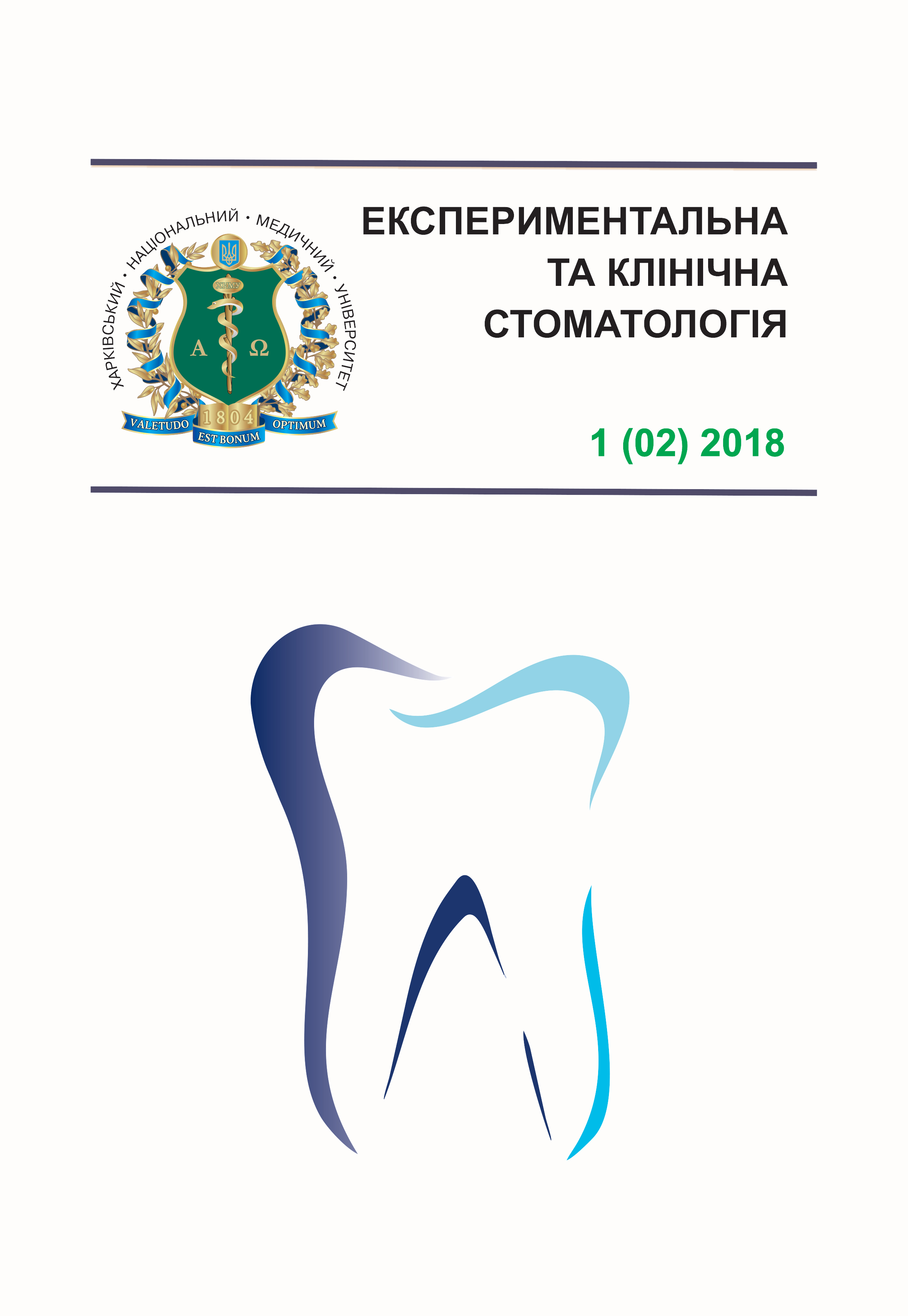Abstract
In the article was discussed types of adhesive compounds in the metal-polymer system of cast metalplastic dental designs, and they improvement at the expense of development and application new polymer covered varnish for dental fixed designs. Since the beginning of polymers using for aesthetic facing fixed dentures, the main problem was creation secure fastening of facing material to metal framework surface. For many years, scientists have solved many issues such as: improvement of synthetic materials, equipment, mechanical retention to metal framework, chips facing restoration in the mouth and so on. Contemporary acrylic polymers have high physical, mechanical and technological properties, allowing to reduce the rate of complications in orthopedic treatment with combined fixed dentures. But it remains the basic condition – the creation of facing material secure fastening to metal frameworks surface, this adhesive bonding may be reproduced with mechanical, physical or chemical principle, but usually it is combination of these types of bonds. The study purpose is physical, mechanical and technological evaluation of new polymer adhesive-opaque composition, and improve of the bonding method in the metal-polymer system.
At the prosthetic dentistry Department of HNMU in cooperation with JSC «Stoma» we have developed new polymeric covering varnish, with improved recipe, which consists of powder (suspension copolymer of methyl and butyl esters of methacrylic acid and universal union Bis-GMA) and liquid (demethacrylat trietilenglikol). For comprehensive inspection of positive characteristics new coating varnish, we conducted series of studies at physical and mechanical indicators.
We have proposed the following methods of retention points creation for fixing aesthetic facing layer in onepiece-cast fixed designs of fixed dentures. On cast metal framework (which made according to the classical method), with a diamond baked disc (thickness 0.4 mm) were marked notches at the angle 20–30° to the axis of the crowns to a depth of 0.2 mm. Notches was placed at a distance of 0.3–0.4 mm from each other. On the occlusal surface of the supporting crowns and intermediate part, caused numerous notches perpendicular to the axis of crown. Thus creating the adhesive system with auxiliary unloading platforms area. The measure determination of adhesive bonding strength of varnish film with a metal surface was performed with universal machine for mechanical in the JSC «Stoma» accredited laboratory.
According to the obtained results, a new coating varnish for fixed dentures at physical and mechanical properties have fully coincide of requirements for these dental materials, the varnish creates a homogeneous non-translucent metal film, and most importantly is an indicator of strength of adhesive bonding between varnish film to metal surface is equal to 7.2±0.1 MPa, whereas the lower limit of standardized index equal to 3.5 MPa.
The study of temperature parameters of curing influence at the strength properties of adhesive layer tested to necessity of temperature level is equal to 170 °C, which provides in the bond system: coating varnish – polymer. The study tested samples with mechanical method of connection between metal and polymer was created according to the standard technique using pearl, and our proposed method of adhesive mechanical system for assessing the strength of bonding in the system «metal–coating varnish–polymer». The amount of adhesion samples made by our method to 22.81±0,29 MPa, which is significantly greater (P<0.001) than 15,40±0,05 MPa in the samples produced using standard methods. The using in prosthodontics practice new coating varnish «Sinma–M+V», which eliminates the metal transmission through layer of facing polymer and due to the high strength of adhesive bonding to metal surface improves the quality and warranty time of construction using.
Keywords: cast dental fixed designs, facing polymers, prosthetic dentistry, adhesion, covering varnish.
References
Bahannan S. An evaluation of three methods of bonding resin composite to stainless steel / S. Bahannan, W.R. Lacefield // Int J Prosthodont. – 1993. – No. 6. – Р. 502–505.
Caeg C. Effectiveness of a method used in bonding resins to metal / C. Caeg, K.F. Leinfelder, W.R. Laccefield, W. Bell. // J. Prosthet. Dent. – 1990. – Vol. 64, No. 1. – P. 37–41.
Janda R. Resin bonding: a new adhesive technology / R. Janda, J.F. Roulet, M. Wulf, H.J. Tiller // J. Adhes. Dent. – 2002. – 4 (4). – P. 299–308.
Kern M. Influence of prolonged thermal cycling and water storage on the tensile bond strength of composite to Ni-Cr alloy / M. Kern, V.P. Thompson // Dent Mater. – 1994. – No. 10. – Р. 19–25.
Kourtis S.G. Bond strengths of resin-to-metal bonding systems / S.G. Kourtis //J. Prosthet. Dent. – 1997. – Vol. 78, No. 2. – P. 136–145.
Shimizu H. Use of metal conditioners to improve bond strengths of autopolymerizing denture base resin to cast Ti-6Al-7Nb and Co-Cr / H. Shimizu, K.S. Kurtz, Y. Tachii, Y. Takahashi // J. Dent. – 2006. – No. 34. –Р. 117–122.
Su-Sung Kim. Effect of adhesive primers on bonding strength of heat cure denture base resin to cast titanium and cobalt-chromium alloy / Su-Sung Kim, Hong-So Yang, Hyun-Pil Lim. // J. Adv. Prosthodont. – 2009. – No. 1. – Р. 41–46.
Пат. 44305 Україна, МПК A61C 13/00. Спосіб фіксації облицювального шару в суцільнолитих незнімних конструкціях зубних протезів / В.П. Голік, Н.М. Бреславець, І.О. Перешивайлова. № 200904900; заявл. 18.05.2009; опубл. 25.09.2009. Бюл. № 18.
Пат. 83560 Україна, МПК A61C 13/23. Лак «Сінма–М+V» для покриття поверхонь металевих конструкцій зубних протезів / Н.М. Бреславець, В.П. Голік, О.О. Бережна, Ю.І. Довгопол, С.В. Черняєв. № 201305794; заявл. 07.05.2013; опубл. 10.09.2013. Бюл. № 17.

